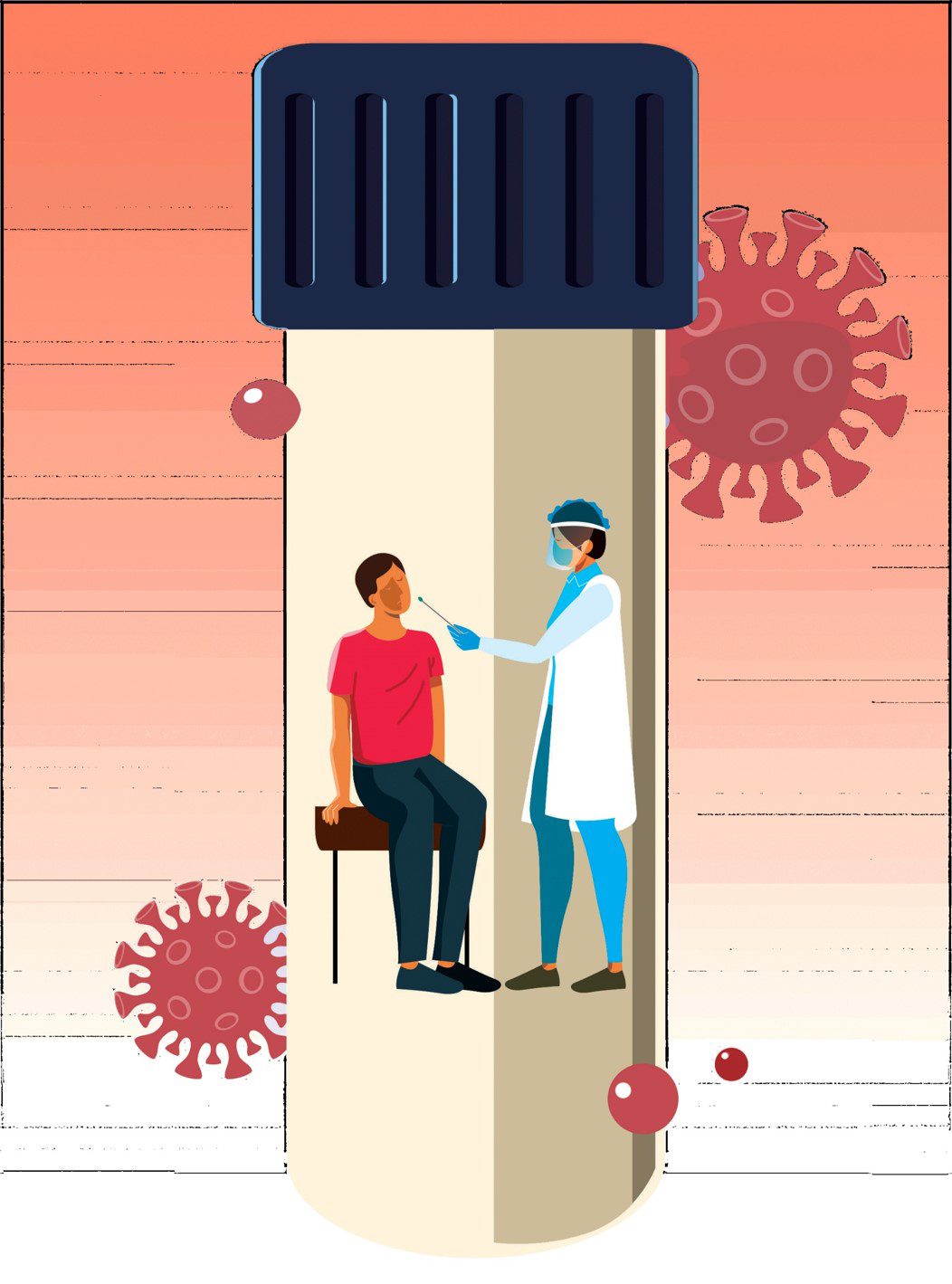HEALTHCARE
Five Lessons Healthcare Industry Can Learn from COVID-19 Pandemic

WORDS: Mr. Kunal Sawhney CEO, Kalkine PHOTOGRAPHY Kalkine Media
The COVID-19 pandemic indeed emerged as a game-changing disruptor for the healthcare industry, altering the way healthcare services should be delivered now and into the future. At the same time, the pandemic has taught some key lessons that can help make the global health systems more efficient and better positioned to deal with future crises.
Several countries across the globe are still struggling to provide adequate healthcare services to citizens amid varied challenges, the consequences of which were felt over the course of the previous year. While such underlying challenges highlighted by the pandemic are yet to be conquered in a durable manner, the transformation brought by COVID-19 in the global healthcare systems deserves a cheer.
During these unprecedented times, public and private healthcare systems have actively adapted to the ever-increasing need for medical supplies. Meanwhile, doctors across the globe have been granted broad flexibility to treat patients, reshaping their services ranging from routine checkups to other treatments. Now, the key challenge is to build on the momentum from these transitions to develop resilience for future waves of COVID-19 and deliver better care at an overall lower cost.
Must Watch: Five tips to improve your emotional health
To overcome this challenge, healthcare systems can apply these key lessons learned from the pandemic:
The need for telehealth integration
Incorporating telehealth services into daily medical operations never felt like a necessity before the pandemic. While certain medical services can only be provided through physical interaction, many everyday healthcare services can be offered remotely. Regular health checkups, medical diagnosis, and mental health checkups are some standard services that can be seamlessly provided over video call interactions.
In fact, people flocked to avail these telehealth services through mobile applications during the pandemic when social distancing restrictions were largely in place. These services helped to protect healthcare professionals and patients from getting sick or making others sick while providing efficient care in many instances.
Given the widespread adoption and success of these services in the COVID-19 era, integrating telehealth into everyday operations and developing more efficient tools to deliver the same should be on the radar of healthcare professionals.
Do Not Miss: Virtual care is booming amid pandemic: A glance at the pros and cons of telehealth
Key focus on the primary care sector
The frontline workers and general physicians acted as crucial players in streamlining the patient inflow during the pandemic. Patients exhibiting mild symptoms of coronavirus turned to their local general physicians for treatment.
However, the underdeveloped capacity of the primary healthcare sector to hold a large influx of patients emerged as a major challenge for countries worldwide. At the same time, small clinics and local healthcare providers in some countries faced a lack of adequate equipment to treat advanced COVID-19 symptoms.
To evade such challenges in future, healthcare sectors can look at options that allow the integration of the primary sector into the overall healthcare system. Towards this end, governments can ponder on developing regional primary health care organisations and comprehensive primary health care centres to tackle the fragmentation in the present system. This would bring professionalism into the small-scale sector and increase its treatment capacity.
Importance of long-term financial support
Procuring necessary equipment for testing and treating COVID-19 disease brought certain financial challenges for the healthcare sector. Providing sanitisation and purchasing testing kits, face masks, gowns and ventilators became more crucial than ever for healthcare industries to cope with the pandemic, giving rise to some additional expenses.
While most countries created funds catering to hospital expenses attached to COVID-19, the delay in procuring these funds impacted several nations to a great extent. Meanwhile, the pandemic disrupted the routine workflow at these medical organisations, making it more challenging to deploy resources to fight against the disease.
At a time when many countries are still a long way off from providing cost-effective healthcare, a revolution in the expenditure side of the sector is the need of the hour. Maintaining a long-term relief fund for such adversities is a vital takeaway from the pandemic crisis.
Possibility of at-home treatment
The pandemic proved that out-of-hospital care also works. Health professionals examined many individuals with chronic health conditions without face-to-face contact during the pandemic. Given the expanse of technology currently available, patients were able to leverage the services of virtual hospitals to get themselves monitored.
In fact, hospitals and medical organisations can explore at-home care as a potential area for expansion in the future. An area otherwise reserved for selected patients, at-home medical care can revolutionise how the healthcare industry operates.
While some individuals would be apprehensive in adopting methods other than physical consultation, at-home treatment can lend significant support to multi-functional hospitals with proper implementation and reform.
Employee recognition matters
Often, healthcare workers remain the hidden warriors working anonymously towards a country’s goals and commitments. Over the past one year, healthcare staff and medical professionals have come out as the unsung heroes of the COVID-19 crisis. At a time when most employees from other industries availed the ‘work from home’ provision, healthcare workers put in double shifts to ensure the workflow continues unhampered.
The pandemic taught us that it is imperative to recognise the pivotal role played by healthcare professionals in any kind of medical crisis to ensure continued productivity. Each employee must be reminded of their role in the system and how essential their contribution is. Towards this end, healthcare reforms focused on rewarding the frontline and other workers for their unparalleled support must be adopted.
No doubt, the healthcare industry has been able to provide effective solutions even in the most unprecedented of times, backed by modern technology and other developments in the field of medical science. However, the healthcare sector can better prepare for COVID-like crises while undergoing a complete makeover in terms of how services are deployed, given the changes mandated by the pandemic.
Author: Kunal Sawhney: Entrepreneur with revolutionary ideas; financial professional with wealth of knowledge in Equities, aiming to transform the delivery of equity research through tech-driven digital platforms
With his knowledge, skillset, and overarching vision, Kunal established one of the fastest growing equity market research firms across Australia in year 2014; and subsequently, in other emerging & developed markets – Kalkine – A business that is based on Digitally Powered Architecture and Extensive Data Science led Premium Research. Kunal’s entrepreneurial and commercial skills backed by the passion to establish a tech-empowered research platform, helped in building Kalkine’s global presence across diverse geographies – Australia, New Zealand, Canada, and the United Kingdom. Further, the plans for the US launch in 2021, have set the premise for attaining an all-encompassing client reach for Kalkine’s Subscription and Media Operations.
With a Master of Business Administration degree from University of Technology, Sydney; Kunal’s business acumen has enabled his brainchild, Kalkine, help clients navigate through equity related matters in a proficient and seamless manner.
Kunal is featured regularly on CNBC, Sky Business, Biz News, Daily Mail, Yahoo Finance, KCBS Radio (Audacy), Bloomberg, Sydney Morning Herald, Global Banking and Financial Review and many more.












